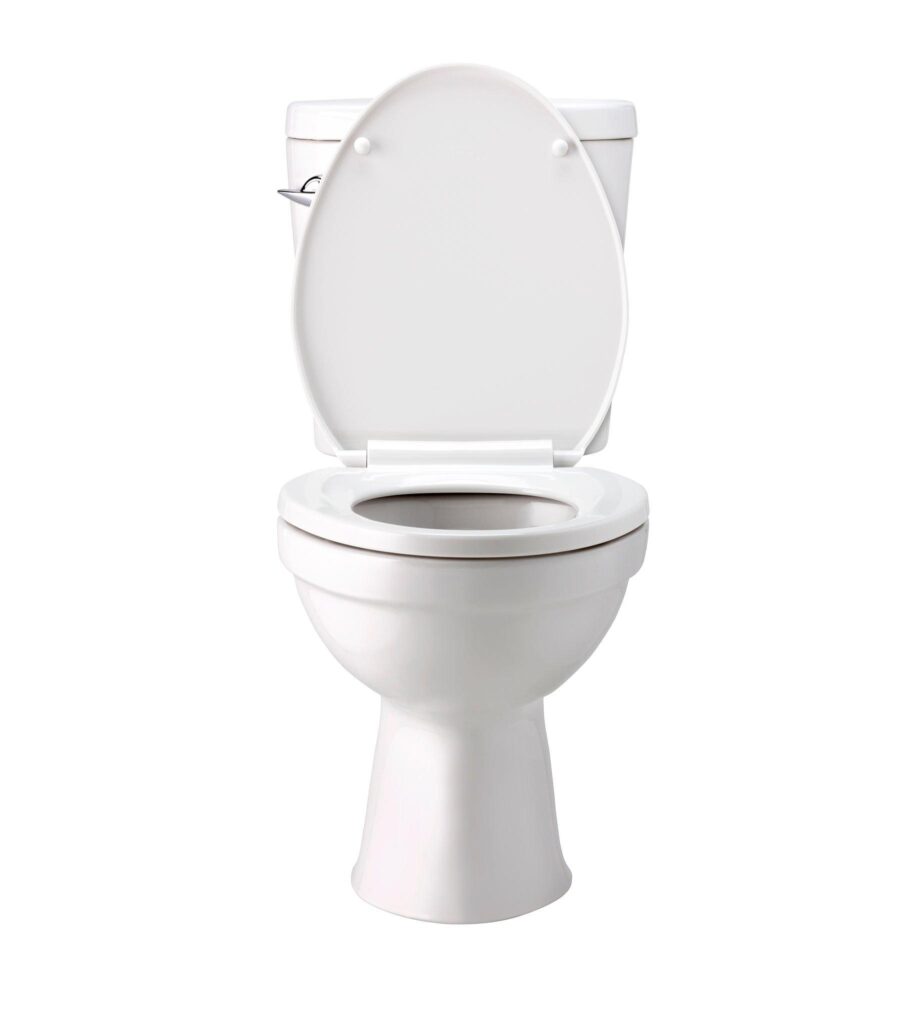Exploring the Advantages and Features of Western Toilets: A Comprehensive Guide
Introduction: Understanding the Basics of Western Toilets
Welcome to this informative section on understanding the basics of Western toilets. Western toilets, also known as flush toilets or modern toilets, are a common fixture in many households and public spaces around the world. In this section, we will explore the advantages and features of Western toilets that have made them a popular choice for sanitation and convenience.
One of the key advantages of Western toilets is their efficient flushing mechanism. Unlike traditional squat toilets, which require manual flushing or pouring water to clear waste, Western toilets utilize a water-based flushing system. This allows for quick and hygienic disposal of waste with just the press of a lever or button.
Western toilets also offer enhanced comfort and convenience compared to other toilet types. They typically feature a contoured seat that provides support and comfort during use. Additionally, many modern Western toilet models include additional features such as adjustable water pressure, heated seats, bidet functions, and even self-cleaning capabilities.
The design of Western toilets also promotes hygiene and cleanliness. The bowl shape and water flow effectively remove waste from the surface, reducing odors and preventing bacterial growth. Furthermore, most Western toilet models are equipped with a lid that can be closed when not in use to maintain cleanliness in the bathroom environment.
In conclusion, understanding the basics of Western toilets is essential for anyone looking to upgrade their bathroom facilities or gain knowledge about different sanitation options. The advantages such as efficient flushing mechanisms, enhanced comfort features, and improved hygiene make them a popular choice for households and public spaces worldwide.
The Evolution of Western Toilets and Their Impact on Sanitation
The evolution of western toilets has played a significant role in improving sanitation and hygiene practices. Over the centuries, these advancements have had a profound impact on waste management and public health.
The history of western toilets dates back to ancient civilizations, where basic forms of toilets were used. However, it was during the 19th century that significant advancements were made in toilet design and functionality. The invention of the flush toilet by Sir John Harington in 1596 laid the foundation for modern sanitation systems.
With improved waste management capabilities, western toilets have greatly contributed to reducing the spread of diseases caused by poor sanitation. The use of water flushing systems helps to effectively remove waste from households and communities, preventing the accumulation of harmful bacteria and pathogens.
Furthermore, modern western toilets are designed with features that enhance hygiene benefits. Features such as seat covers, bidet functions, and automatic flushing mechanisms promote cleanliness and reduce the risk of contamination.
In addition to individual health benefits, the widespread adoption of western toilets has had a positive impact on overall public health. Proper waste management through sewer systems prevents contamination of water sources, reducing the risk of waterborne diseases.
Overall, through continuous advancements in design and functionality, western toilets have revolutionized sanitation practices worldwide. They have significantly improved hygiene standards while contributing to more effective waste management systems for healthier communities.
Key Features and Components of Western Toilets for Enhanced Comfort and Convenience
When it comes to Western toilets, there are several key features and components that contribute to enhanced comfort and convenience. These features are designed to provide users with a more comfortable and efficient bathroom experience.
One important aspect of a Western toilet is the shape of the toilet bowl. The shape can vary, with options such as round or elongated bowls. Elongated bowls tend to offer more comfort and support for users, while round bowls are often preferred for smaller spaces.
Another factor to consider is the seat height of the toilet. Standard seat heights range from 14 to 16 inches, but there are also options available with higher seat heights for individuals who may have mobility issues or prefer a taller seating position.
The flushing mechanism is another crucial component to consider. There are two main types: gravity-fed and pressure-assisted flushing mechanisms. Gravity-fed toilets depend on the force of gravity to flush waste down the drain, while pressure-assisted toilets use compressed air or water pressure for a more powerful flush. The choice between these two mechanisms depends on personal preference and desired flushing power.
Water-saving features have become increasingly important in modern toilets. Many Western toilets now come equipped with water-saving technologies such as dual-flush systems, which allow users to select between a partial flush for liquid waste and a full flush for solid waste. This helps conserve water without compromising on performance.
In conclusion, when selecting a Western toilet, factors such as toilet bowl shape, seat height, flushing mechanism type (gravity-fed vs. pressure-assisted), and water-saving features should all be taken into consideration in order to ensure enhanced comfort and convenience in your bathroom experience.
The Advantages of Using Western Toilets over Other Toilet Types
Using Western toilets offers several advantages over other toilet types, making them a preferred choice for many individuals. One significant advantage is the easier accessibility they provide for people with mobility issues or disabilities. The design of Western toilets, with their higher seat height and grab bars, allows for better maneuverability and support, ensuring that individuals with limited mobility can use the restroom independently.
Another advantage of Western toilets is the improved cleanliness and hygiene standards they offer. These toilets are typically equipped with a flush system that efficiently removes waste and ensures proper sanitation. Additionally, the use of toilet paper or bidets is common in Western toilet culture, promoting better personal hygiene practices.
Furthermore, Western toilets are designed to be user-friendly for all age groups. The higher seat height makes it more comfortable for older adults who may have difficulty sitting down or getting up from lower seats. It also provides convenience to parents who need to assist young children during bathroom visits.
Overall, the advantages of using Western toilets include easier accessibility for people with mobility issues or disabilities, improved cleanliness and hygiene standards, as well as user-friendly design for all age groups. These factors contribute to a more inclusive and comfortable restroom experience.
Tips for Maintaining and Cleaning Your Western Toilet to Ensure Longevity and Optimal Performance
Maintaining and cleaning your western toilet is essential to ensure its longevity and optimal performance. By following a few simple tips, you can keep your toilet clean and in good working condition.
Firstly, it is important to choose appropriate cleaning products for your toilet. Avoid using harsh chemicals, as they can damage the surface of the toilet bowl. Instead, opt for mild cleaners specifically designed for toilets. These cleaners are effective in removing stains and disinfecting the toilet without causing any harm.
Regular maintenance practices are also crucial in keeping your toilet clean. Make it a habit to clean the toilet at least once a week, or more frequently if needed. Use a brush with sturdy bristles to scrub the inside of the bowl thoroughly, paying attention to hard-to-reach areas such as under the rim.
In addition to regular cleaning, it is suggested to perform deeper cleaning sessions periodically. This involves removing mineral deposits or limescale buildup that may accumulate over time. You can use vinegar or a commercial descaling agent specifically formulated for toilets to tackle these stubborn stains.
Furthermore, don’t forget about other components of your western toilet that require maintenance. Check and tighten any loose bolts or fittings regularly to prevent leaks or wobbling. Ensure that the flush mechanism is functioning properly by testing it periodically.
By following these tips for maintaining and cleaning your western toilet, you can ensure its longevity and optimal performance while keeping it hygienic and pleasant to use for years to come
Choosing the Right Western Toilet for Your Home or Commercial Space: Factors to Consider
When it comes to choosing the right western toilet for your home or commercial space, there are several factors to consider. Two key considerations are budget and available space dimensions, as well as plumbing requirements.
Firstly, budget considerations play a significant role in determining the type of western toilet you can afford. It is important to establish a budget range that suits your financial capacity. This will help you narrow down your options and focus on toilets that fall within your price range.
Secondly, available space dimensions are crucial in determining the size and design of the western toilet that will fit comfortably in your chosen area. Measure the dimensions of the space where you plan to install the toilet, including both length and width. This will help you determine whether a standard-sized toilet or a compact model would be more suitable.
Lastly, plumbing requirements should not be overlooked when selecting a western toilet. Consider the existing plumbing layout and connections in your home or commercial space. Ensure that the toilet you choose aligns with these requirements to avoid any costly modifications or additional plumbing work.
By considering these factors – budget considerations, available space dimensions, and plumbing requirements – you can make an informed decision when choosing the right western toilet for your home or commercial space.
Conclusion: Embracing the Comfort and Benefits Offered by Western Toilets in Modern Living Spaces
In conclusion, embracing the comfort and benefits offered by Western toilets in modern living spaces can greatly enhance our daily lives. The introduction of Western toilets has revolutionized the way we approach personal hygiene and sanitation.
One of the key benefits of Western toilets is their ergonomic design, which prioritizes user comfort. These toilets are designed to provide optimal seating posture, reducing strain on the body and promoting better bowel movements. The availability of features such as heated seats, bidet functions, and adjustable water pressure further enhance the overall comfort level.
Additionally, Western toilets offer improved cleanliness and hygiene compared to traditional alternatives. With features like flushing mechanisms and built-in bidets, they ensure efficient waste removal and thorough cleaning after each use. This not only promotes personal cleanliness but also contributes to a healthier living environment.
Furthermore, Western toilets are compatible with modern plumbing systems found in most households today. Their standardized designs make installation and maintenance easier, ensuring hassle-free usage for homeowners.
By embracing the comfort and benefits offered by Western toilets in modern living spaces, we can elevate our daily routines and enhance our overall well-being. Whether it is in residential homes or commercial establishments, these advanced toilet systems have become an essential part of contemporary living.

